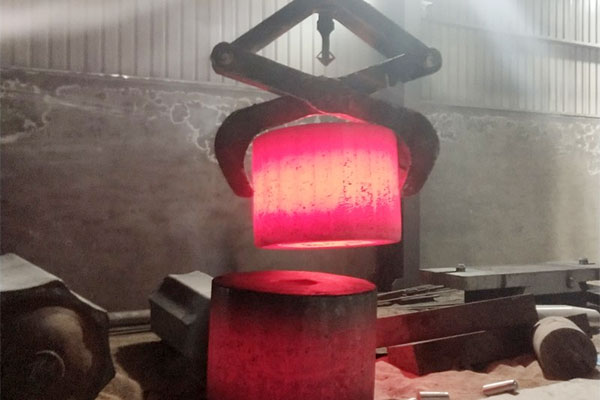The basic process of forging
The forging process of forgings is generally as follows: ingots preparation or blank blanking - ingots (blank) inspection - heating - forging - cooling - intermediate inspection - heat treatment - cleaning - final inspection after forging.
1. the ingot is mainly used for the production of medium or large forgings, ingot has hot and cold. Hydraulic press mainly USES ingot to produce forgings, especially hot ingot.
2. Blank blanking is mainly applicable to small free forgings and die forgings. As a result of each factory condition is different, blanking method also has each different. There are four common methods: cutting (cutting machine cutting), sawing (with reciprocating saw or circular saw cutting), gas cutting and cutting on the hammer with a knife.
3.ingots (blank) inspection ingots or blank, in forging production is generally referred to as "incoming material". Inspection of incoming materials is the first step to control the production of qualified forgings. Inspection should be carried out strictly in accordance with its technological procedures to avoid the waste of metal materials caused by oversize and the waste of forgings caused by undersize due to too small size.
4. heating the whole heating process should strictly abide by the heating procedures, prevent the occurrence of "over-heat" or "over-heat" and other phenomena, in order to ensure the heating quality.
5. Forging forging is the main process of forging production, which plays a decisive role in forging quality. Forging generally includes: all kinds of press die forging, free forging, hammer on die forging and so on. In order to prevent forging defects, forging procedures should be carried out in strict accordance with the operating rules and methods of each basic process.
6. Cooling after forging is a very important process in forging production. Even if the preceding heating and forging processes are normal, improper cooling will result in waste products if cooling specifications are not strictly followed.
7. Intermediate inspection is necessary for quality control, and inspection after cooling is essential. This process is mainly for appearance and size inspection.
8. Post-forging heat treatment In order to ensure the internal quality of forgings and prepare for the organization of the next process, forgings generally have to be delivered after the first heat treatment. For furnace cooling forgings, furnace cooling and post-forging heat treatment are often combined.
9. The cleaning of free forgings is mainly to clear the local surface defects of forgings, such as cracks, folds and heavy skins. The main cleaning methods are wind shovel, grinding wheel and flame cleaning, etc. For the surface of the tire die forging parts and die forging parts, but also to clear the surface of the iron sheet, the cleaning methods are roller cleaning, blasting (shot) cleaning, pickling and steel brush, etc..
10. Final inspection This process is mainly to check whether the forgings meet the requirements of forging drawings and the technical requirements specified. Including inspection and reinspection of forging surface, shape and dimension. For important forgings with special requirements, hardness, mechanical properties, metallographic structure (high power, low power, grain size) and flaw detection (ultrasonic, magnetic powder) should also be tested.
from:168 forging
